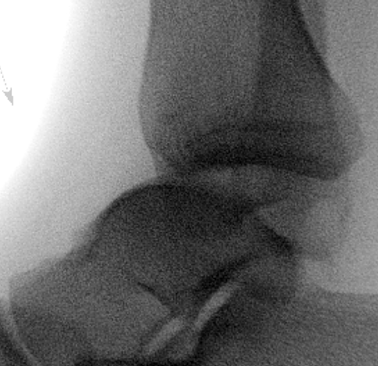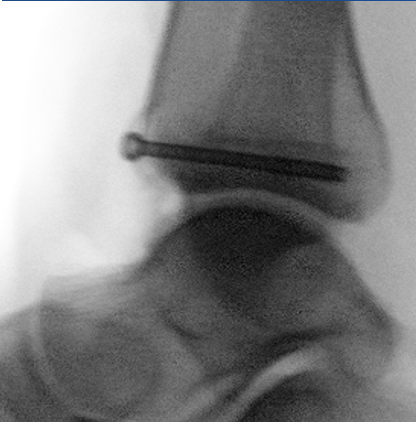
Prof Mason
Liverpool Foot and Ankle Clinic
To book an appointment, either email or phone the number below or click the link.
E-mail: CVDWclerical@outlook.com
Contact Patient Liaison: 07717580737
Ankle Instability
Ankle instability refers to a condition where the ankle frequently "gives way" or feels unstable, often occurring during activities like walking, running, or even standing.
What causes ankle instability?
Ankle instability can be caused by several factors, which often interrelate and compound the condition. The main causes include:
- Ligament Injuries:
- Sprains: The most common cause of ankle instability is repeated ankle sprains, which stretch or tear the ligaments. This weakens the ligaments over time, reducing their ability to stabilize the joint.
- Severe Sprains or Tears: More significant ligament damage, such as complete tears, can cause chronic instability if not properly treated.
- Mechanical Factors:
- Anatomical Variations: Some people may have a naturally shallow ankle joint or other anatomical differences that predispose them to instability. This includes a high arched foot, which moves the force going through the ankle to the outer aspect.
- Previous Fractures: Fractures around the ankle joint can alter the mechanics and contribute to instability.
- Muscle Weakness and Imbalance:
- Weak Peroneal Muscles: These muscles play a key role in stabilizing the ankle. Weakness or imbalance in these muscles can lead to instability.
- General Weakness: Overall lower leg weakness, particularly in the muscles around the ankle, can contribute to instability.
- Proprioceptive Deficits:
- Impaired Sensory Feedback: Damage to the ligaments and other structures around the ankle can impair the body's ability to sense the position of the joint (proprioception), leading to poor control and instability.
- Neuromuscular Factors:
- Poor Coordination: Impaired coordination can make it difficult to control ankle movements, increasing the risk of instability.
- Reflex Inhibition: Injury to the ankle can lead to a protective reflex inhibition of muscle activity, weakening the support around the joint.
- Chronic Conditions:
- Arthritis: Degenerative changes in the ankle joint, such as those caused by arthritis, can contribute to instability.
- Tendon Pathologies: Conditions affecting the tendons around the ankle, like tendinopathy, can also lead to instability.
- Improper Rehabilitation:
- Inadequate Treatment of Initial Injuries: Failing to properly rehabilitate an ankle sprain or other injury can lead to chronic instability. Inadequate strengthening, stretching, and proprioceptive training can all contribute.
Symptoms
Symptoms of ankle instability can vary in severity and frequency, but they commonly include the following:
- Frequent Ankle Sprains:
- Repeated episodes of the ankle turning or rolling, particularly on uneven surfaces or during physical activities.
- Chronic Swelling:
- Persistent or recurrent swelling around the ankle, even after minor activities.
- Pain and Tenderness:
- Ongoing discomfort, pain, or tenderness in the ankle, especially on the outer side.
- Wobbliness or Feeling of Instability:
- A sensation that the ankle is weak or unstable, leading to a lack of confidence in the joint's stability.
- Giving Way:
- The ankle frequently "gives out" or feels like it might collapse, particularly during weight-bearing activities.
- Stiffness:
- Reduced range of motion and stiffness in the ankle joint, which may worsen with activity.
- Difficulty with Physical Activities:
- Challenges in performing sports or activities that require quick changes in direction, jumping, or running.
- Reduced Proprioception:
- Decreased ability to sense the position and movement of the ankle, leading to coordination issues.
What are the treatments for ankle instability?
The treatment of ankle instability typically involves a combination of non-surgical and, in some cases, surgical approaches. The appropriate treatment plan depends on the severity of the condition, the patient's activity level, and their overall health. Here are the main treatment options:
Non-Surgical Treatments
- Physical Therapy:
- Strengthening Exercises: Focused on the muscles around the ankle to provide better support and stability.
- Balance Training: Proprioceptive exercises to improve the body's ability to sense the position of the ankle and coordinate movements.
- Stretching: To maintain flexibility and prevent stiffness.
- Bracing and Supports:
- Ankle Braces: Provide external support to prevent the ankle from rolling and to protect against further injury.
- Taping: Athletic taping techniques can offer temporary stability during activities.
- Activity Modification:
- Avoiding activities that may exacerbate instability, such as uneven surfaces or high-impact sports.
- Medications:
- Anti-inflammatory Drugs: To reduce pain and swelling.
- Pain Relievers: Over-the-counter medications to manage discomfort.
- Lifestyle Changes:
- Weight Management: Maintaining a healthy weight to reduce the load on the ankle.
- Footwear: Wearing supportive shoes that offer good ankle support.
- Proprioception Training:
- Exercises that enhance the body's ability to sense and respond to movements of the ankle.
Surgical Treatments
If non-surgical treatments fail to improve ankle instability, surgical options may be considered. Surgical procedures aim to repair or reconstruct damaged ligaments and other structures to restore stability. Common surgical treatments include:
- Modified - Broström Gould Procedure:
- A common surgical technique to repair and tighten the lateral ligaments of the ankle.
- Ligament Reconstruction:
- Using either autografts (patient's own tissue) or allografts (donor tissue) to reconstruct the damaged ligaments.
- Arthroscopy:
- A minimally invasive procedure to clean out any loose fragments, scar tissue, or other debris from the ankle joint which can cause pseudoinstability, which is a pain feedback loop causing the muscles around the ankle to temporarily switch off.
- Osteotomy:
- Surgical realignment of bones in cases where bone structure contributes to instability.


Ankle Stabilisation
This is an example of an acute instability following trauma which had avulsion fracture fixation and ligament repair
FAQs
How successful is ankle stabilisation?
Ankle stabilization surgery generally has a high success rate, particularly when performed by an experienced surgeon and followed by appropriate rehabilitation. The success of the surgery can be measured in terms of reduction in ankle instability, pain relief, return to normal activities, and prevention of future sprains. Here’s an overview of the success rates and factors influencing outcomes:
Success Rates
- Reduction in Instability: Studies have shown that up to 90-95% of patients experience significant improvement in ankle stability after surgery.
- Pain Relief: Many patients report a substantial reduction in pain, allowing them to return to normal daily activities and sports.
- Return to Activity: A majority of patients can return to their pre-injury level of activity, including sports. However, the exact percentage varies depending on the severity of the initial injury and the type of activity.
- Long-term Outcomes: Most patients maintain stability and function in the long term, with many studies reporting sustained improvements for several years post-surgery.
Factors Influencing Success
- Severity of the Initial Injury:
- Patients with less severe ligament damage tend to have better outcomes compared to those with more complex injuries.
- Rehabilitation Adherence:
- Following a structured rehabilitation program is crucial for optimal recovery. Patients who diligently follow their physical therapy regimen typically have better outcomes.
- Patient’s Health and Activity Level:
- Overall health, weight, and activity level can influence recovery. Healthier, more active patients often recover more quickly and fully.
- Presence of Comorbid Conditions:
- Conditions such as arthritis or other foot/ankle abnormalities can affect the overall success of the surgery.
What is the recovery time after ankle instability surgery?
 Button
ButtonRecovery time varies but generally includes:
- Immobilization for a few weeks
- Gradual weight-bearing and physical therapy starting 2-6 weeks post-surgery
- Full recovery and return to sports or high-impact activities may take 3-6 months
Can ankle instability lead to other problems?
 Button
ButtonRecovery time varies but generally includes:
- Immobilization for a few weeks
- Gradual weight-bearing and physical therapy starting 2-6 weeks post-surgery
- Full recovery and return to sports or high-impact activities may take 3-6 months

